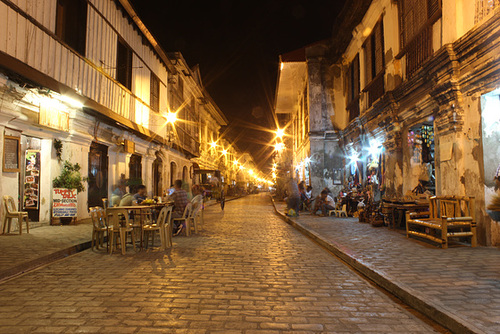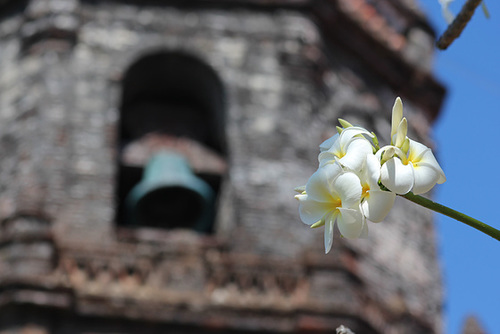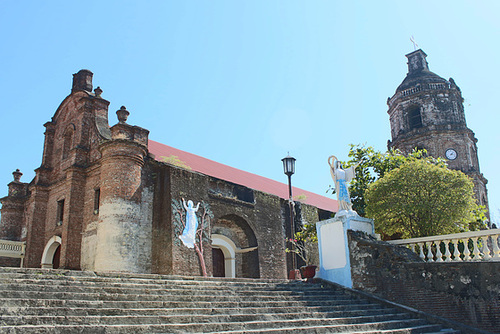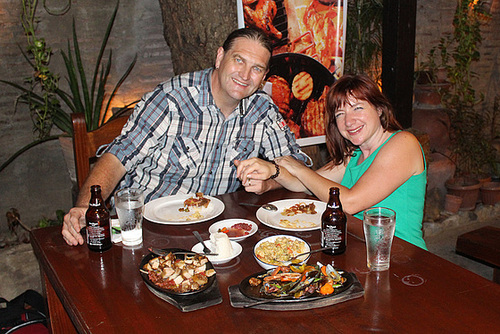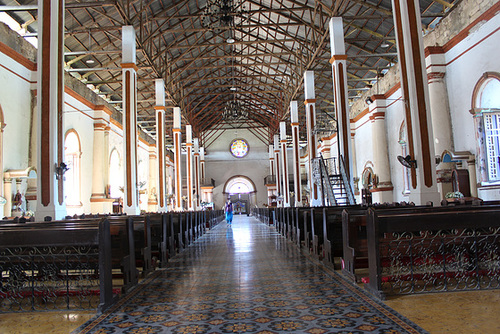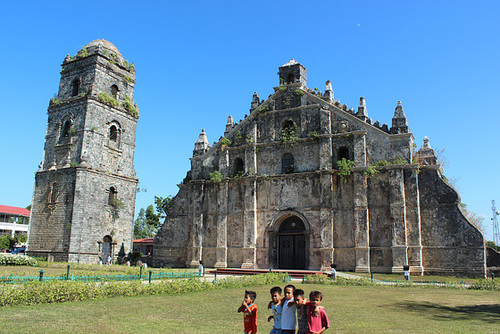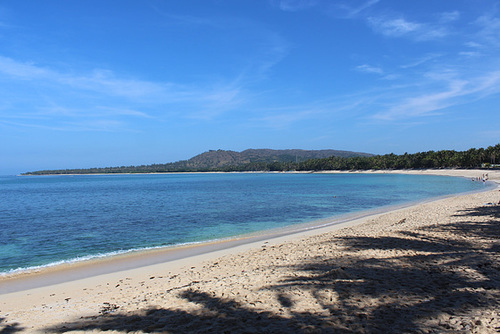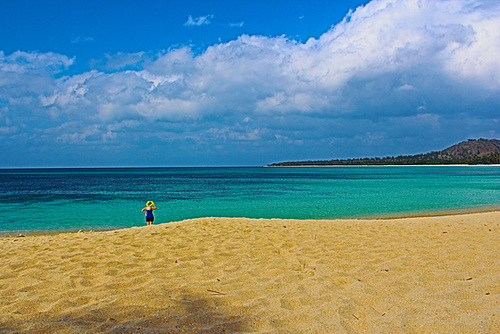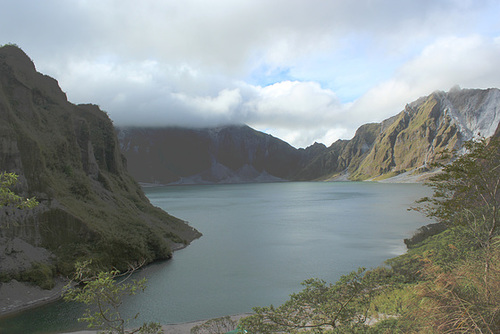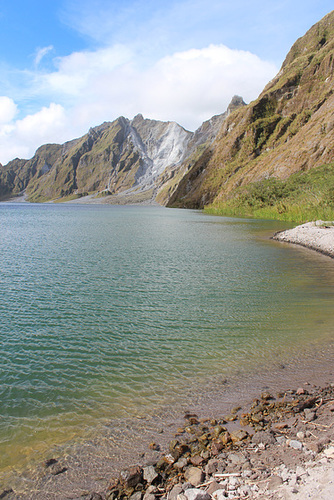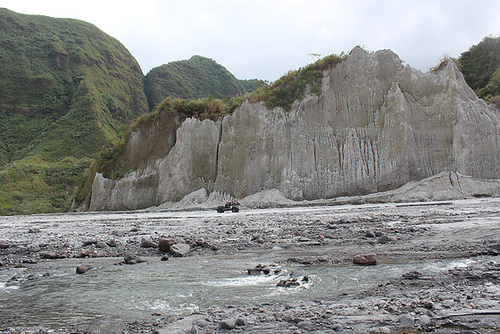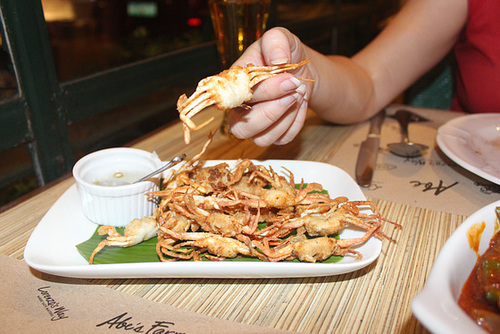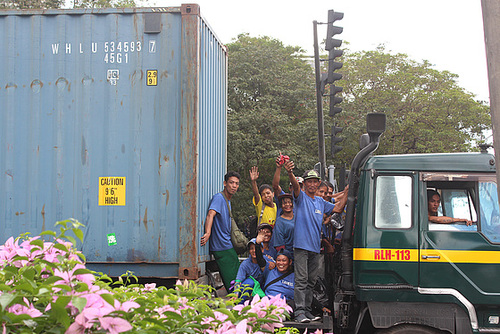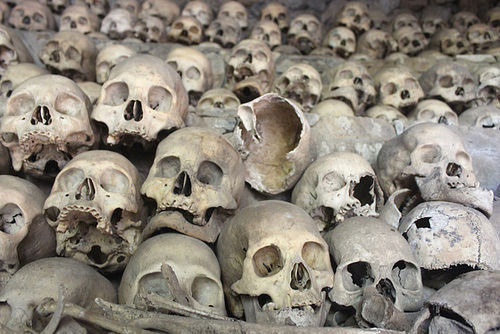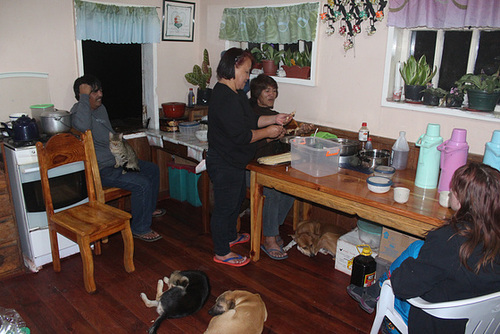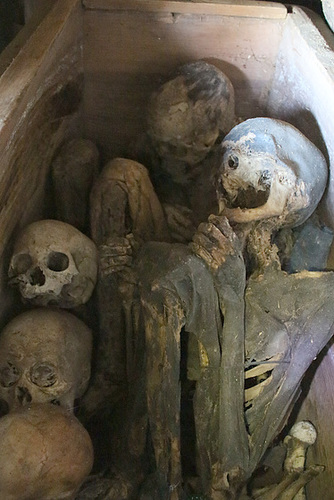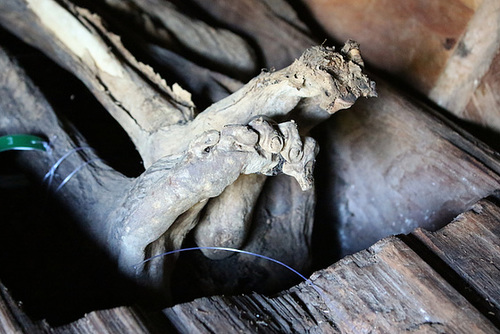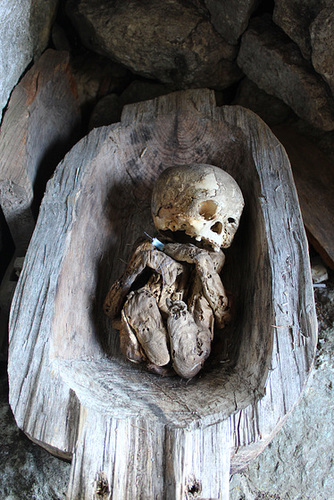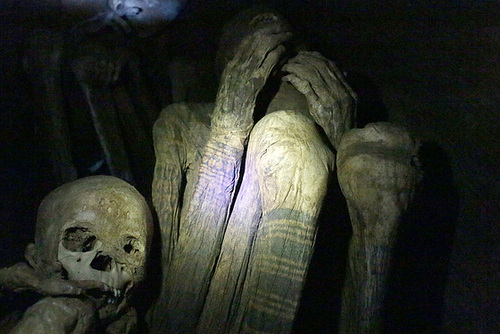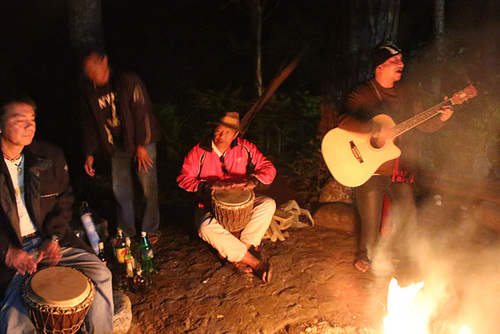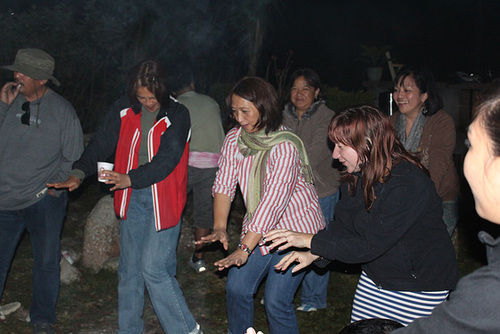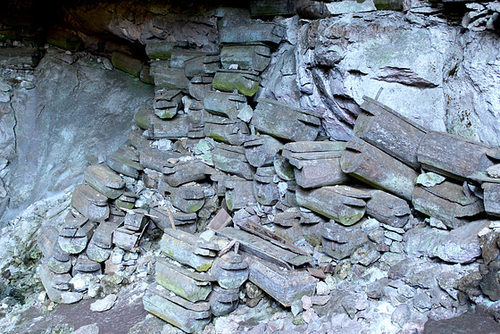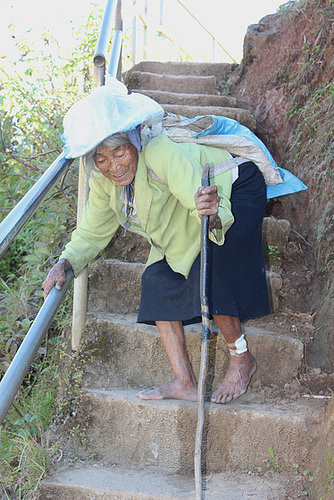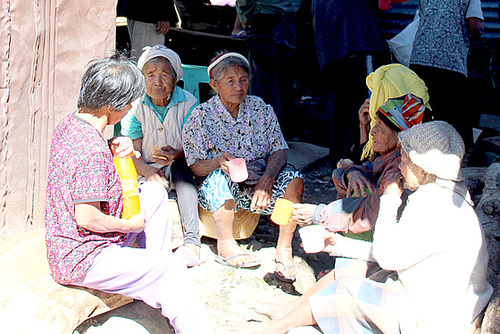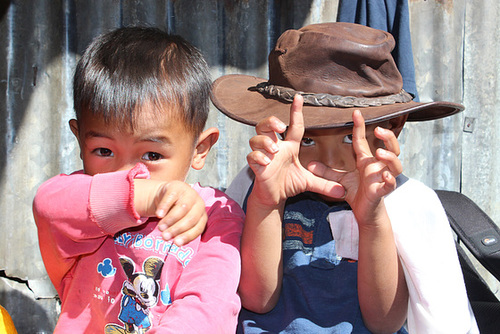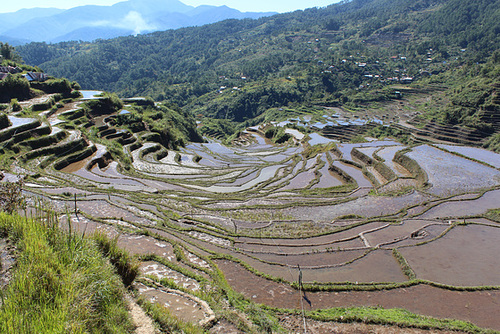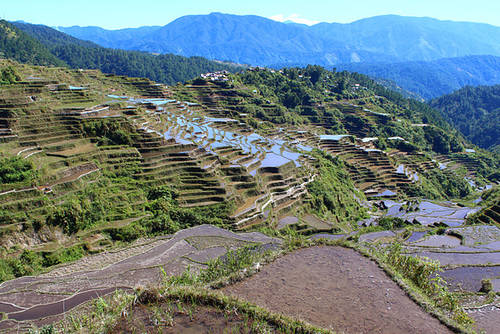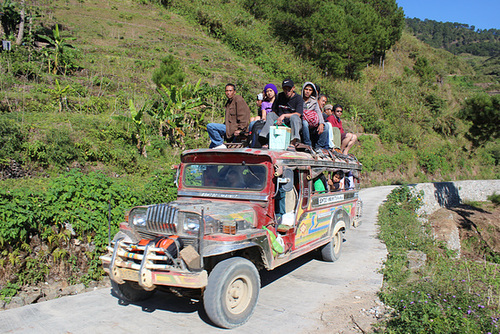10 to 18 January, 2014 - Tagaytay, Naga, Caramoan, Manila - (Philippines)
It turns out that the back to back transports of getting to Pinatubo were not the end of it. After getting down, we went straight to the highway; caught a bus to one terminal in Manila; negotiated traffic in the chaotic capital to get to another bus terminal (over an hour and a half, and it wasn't even peak hour); and finally got out again, heading south, to Tagaytay.
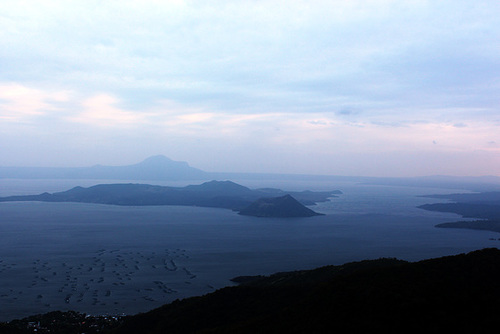
Volcanic Cones in a Crater Lake
The outer crater is 75 kilometres round the rim. In the lake (Lake Taal) are numerous volcanic islands, cones, and craters, many still quite active. The main cone has a lake, which in turn has a crater with a lake, which has an island in it.
Unforturnately, that "matroishka doll" of craters is not visible from the rim. And, unfortunately, due to the haze, we were lucky to get anything at all in our photo. But here it is, anyway, albeit with the levels adjusted somewhat.
It did take us an extra night to recover from all the travelling, but after an extremely lazy day, we were ready to face travel again.
Lazy? Well, we got up, and went for brunch at a place on the crater's rim with a fantastic view. But the real marvel was how early everyone was eating lunch! Then we finally looked at a clock to find that our brunch was commencing, and it was nearly 2 o'clock. We dragged brunch (now lunch, or more correct in Seinfeld terms, linner) until about 5, when we went to another venue to celebrate beer o'clock while looking in to the crater from a slightly different angle. Yes, lazy.
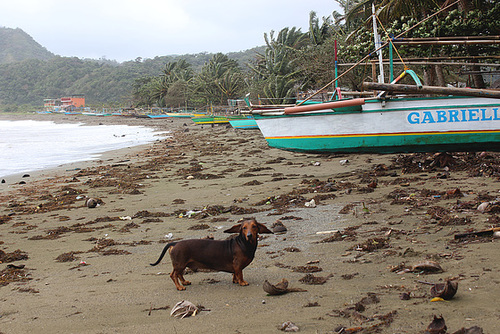
Windy at Caramoan
We had visions of this dog doing a Sally Fields impression, from the Flying Nun. He seems to be angling his ears in to get the aerodynamics right for a lift off.
The wind blew so hard on our second day at the beach. The rain was not as constant, but still had us running every now and then, sheltering for only a few minutes at a time. Coffee shops, behind beached boats, under random tarpaulins, beneath the biggest tree, or sometimes, well, it was too much trouble, and easier to face getting wet.
Despite the weather, we found the place very beautiful, and although we obviously would have enjoyed more if we had been able to enjoy a swim or a trip to islands, it was still a great final stop before returning to Manila for our flight home.
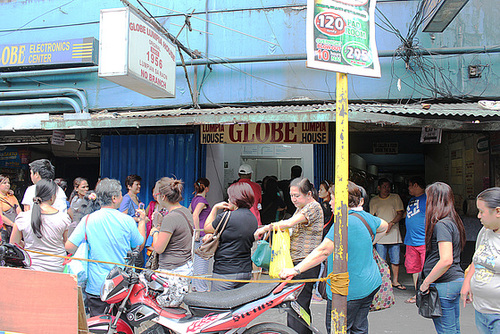
Queueing For Lumpia
We walked past and saw more than 40 people lined up at this Lumpia House, which proudly proclaims it has been here since 1956. Knowing nothing more than its apparent popularity, we waited our turn. It was nearly an hour, and as it was take-away only, we found a space on some nearby steps to eat.
The juices and provided dipping sauce ran down our arms, over our shorts and shoes, and generally covered our faces. This elicetted comments from passers-by: "Enjoy your food."; "Looks good."; "They are tasty, aren't they."; "We wanted some but didn't have time to wait." All we could do was wipe our faces with our fore-arms, further smearing the mess, smile, nod, and keep eating. They were delicious, but impossible to eat with any decorum.
It turns out that the back to back transports of getting to Pinatubo were not the end of it. After getting down, we went straight to the highway; caught a bus to one terminal in Manila; negotiated traffic in the chaotic capital to get to another bus terminal (over an hour and a half, and it wasn't even peak hour); and finally got out again, heading south, to Tagaytay.

Volcanic Cones in a Crater Lake
The outer crater is 75 kilometres round the rim. In the lake (Lake Taal) are numerous volcanic islands, cones, and craters, many still quite active. The main cone has a lake, which in turn has a crater with a lake, which has an island in it.
Unforturnately, that "matroishka doll" of craters is not visible from the rim. And, unfortunately, due to the haze, we were lucky to get anything at all in our photo. But here it is, anyway, albeit with the levels adjusted somewhat.
It did take us an extra night to recover from all the travelling, but after an extremely lazy day, we were ready to face travel again.
Lazy? Well, we got up, and went for brunch at a place on the crater's rim with a fantastic view. But the real marvel was how early everyone was eating lunch! Then we finally looked at a clock to find that our brunch was commencing, and it was nearly 2 o'clock. We dragged brunch (now lunch, or more correct in Seinfeld terms, linner) until about 5, when we went to another venue to celebrate beer o'clock while looking in to the crater from a slightly different angle. Yes, lazy.

Windy at Caramoan
We had visions of this dog doing a Sally Fields impression, from the Flying Nun. He seems to be angling his ears in to get the aerodynamics right for a lift off.
The wind blew so hard on our second day at the beach. The rain was not as constant, but still had us running every now and then, sheltering for only a few minutes at a time. Coffee shops, behind beached boats, under random tarpaulins, beneath the biggest tree, or sometimes, well, it was too much trouble, and easier to face getting wet.
Despite the weather, we found the place very beautiful, and although we obviously would have enjoyed more if we had been able to enjoy a swim or a trip to islands, it was still a great final stop before returning to Manila for our flight home.

Queueing For Lumpia
We walked past and saw more than 40 people lined up at this Lumpia House, which proudly proclaims it has been here since 1956. Knowing nothing more than its apparent popularity, we waited our turn. It was nearly an hour, and as it was take-away only, we found a space on some nearby steps to eat.
The juices and provided dipping sauce ran down our arms, over our shorts and shoes, and generally covered our faces. This elicetted comments from passers-by: "Enjoy your food."; "Looks good."; "They are tasty, aren't they."; "We wanted some but didn't have time to wait." All we could do was wipe our faces with our fore-arms, further smearing the mess, smile, nod, and keep eating. They were delicious, but impossible to eat with any decorum.
